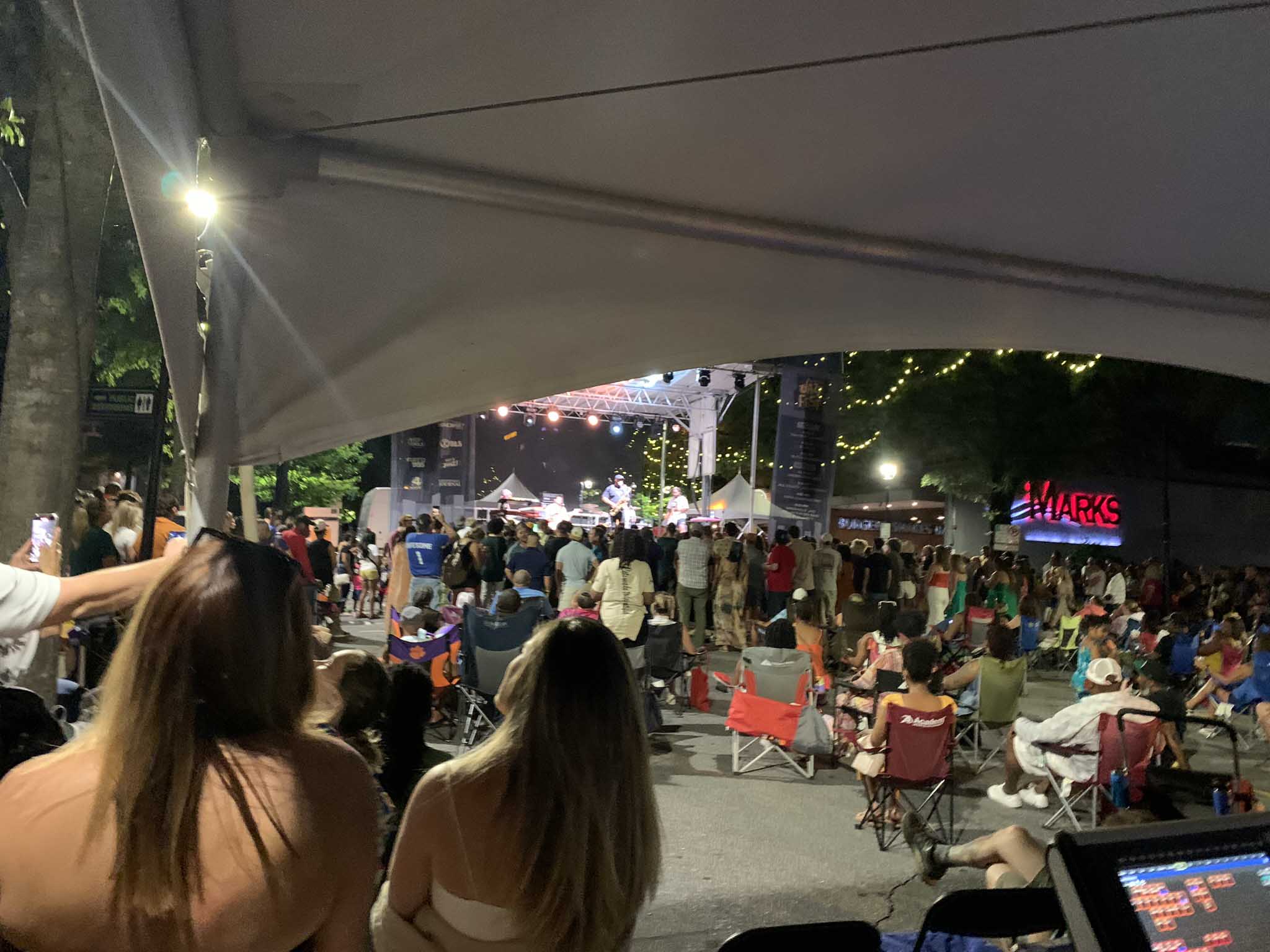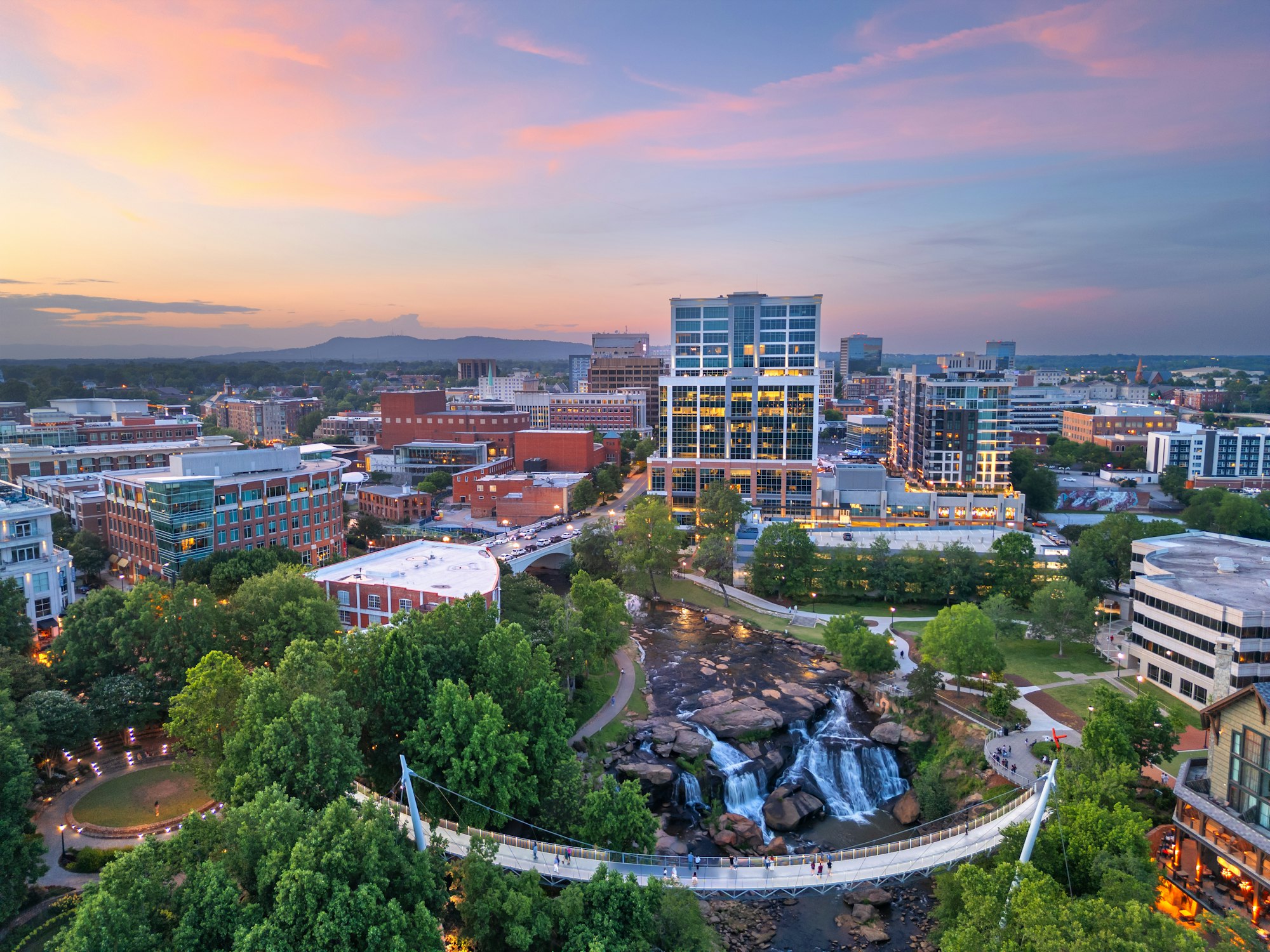One of the perks of living in Greenville is enjoying four distinct seasons without the extreme weather some other places get. We have a humid subtropical climate here in the Piedmont regionen.wikipedia.org, which basically means hot summers, mild winters, and pretty generous rainfall year-round. Let’s break down those specific questions about snow, hurricanes, and tornadoes:
-
Does Greenville get snow? – We do get a little snow, but not a whole lot. Winters are generally short and cool, not severe. On average, Greenville sees about 4 to 5 inches of snow per yearen.wikipedia.org, mainly in the months of January and February. Some years we barely get a dusting or just a “trace” of snow, and once in a blue moon we might get a heavier snowfall if conditions line up (for instance, back in the winter of 1935-36 Greenville recorded a whopping 21 inches of snow total, which was very much an outlieren.wikipedia.org!). Most typical winters might bring one or two light snowfalls of a couple inches that melt within a day or two. White Christmases are pretty rare. What’s more common for winter precipitation here is ice or sleet – occasionally we’ll get an ice storm where freezing rain coats the trees and roads. Those can be tricky (downed tree limbs and such), but the city and county are fairly well-prepared to salt roads and handle it since it happens every few years. The bottom line: if you’re moving from up North, you might chuckle at what we call “snow” – you likely won’t need a heavy snow blower or anything. But do keep a scraper for the odd frosty morning, and maybe enjoy the occasional light snowfall as a treat rather than a nuisance.
-
What about hurricanes? – Being about 200 miles inland from the coast, Greenville doesn’t take direct hits from hurricanes the way Charleston or Myrtle Beach might. By the time a tropical storm or hurricane’s remnants reach us, they’ve usually weakened significantly. However, we can still feel the effects of big tropical systems in the form of heavy rain, gusty winds, and even spin-off tornadoes. The greatest hurricane-related threat here is flooding from heavy rainfallgceoc.com. For example, Tropical Storm Jerry in 1995 parked over the Upstate and dropped over 15 inches of rain in parts of Greenville Countygceoc.com, causing quite a bit of flooding. More recently, the remnants of hurricanes like Irma (2017) and Zeta (2020) passed through as tropical storms and gave us a day of downpours and some trees down. Generally, though, we have plenty of advance warning for these events and can prepare (secure loose objects, etc.). It’s not something that happens every year – maybe a couple of notable tropical remnants per decade. Also, being on higher terrain, Greenville is less prone to catastrophic flood damage than low-lying coastal areas, but localized flash flooding can occur along creeks and low spots during torrential rain. We do sometimes get strong thunderstorms in summer that can feel hurricane-like with gusty winds, but those are usually short-lived.
-
Do tornadoes happen in Greenville? – Tornadoes are not very common here, but they can happen on occasion. We’re not in “Tornado Alley” by any means, but the Southeast does get tornadoes, often from spring thunderstorms or tropical systems. Greenville County averages only a small number of tornadoes in a given decade, and they are typically on the weaker side (EF0 or EF1). That said, we have seen some noteworthy twisters. In April 2020, Greenville County was hit by three tornadoes in one day – two of them were rated EF2 with winds around 115–120 mph, which is quite significantgceoc.comgceoc.com. Those particular tornadoes struck northern parts of the county, destroyed several homes and injured a few peoplegceoc.com. It was an unusual event for us, but it proved we’re not immune. Most tornadoes here, when they do occur, tend to be short-lived and isolated. Our peak tornado “season” is March through May (spring) with a secondary bump in the fall (around September)gceoc.com. The local National Weather Service and media do a good job alerting folks when conditions are ripe for severe weather. Many residents have weather radios or smartphone alerts to stay informed. So, while you shouldn’t lose sleep worrying about tornadoes every storm, it’s wise to be aware during severe weather season. Know your safe spot (interior room or basement) just in case, and you’ll be fine. Again, serious tornadoes are rare here – many long-time locals have never seen one in person.
In summary, Greenville’s climate is one of its selling points. You get to enjoy spring azaleas blooming, hot summer days perfect for a swim, crisp fall afternoons with gorgeous foliage in the nearby mountains, and a touch of winter chill without the brutal blizzards. We do have to deal with humidity in the summer (July averages around 90°F and quite humid)en.wikipedia.org, and we carry an umbrella often due to year-round rain (~47 inches annually)en.wikipedia.org. But we also get about 220 sunny days a year, and when you see those blue skies over the Blue Ridge, you’ll forgive a little rain or humidity. Just remember: dress in layers in spring and fall (the temp can swing 30 degrees in a day), keep an eye on the forecast during hurricane season (for remnant rains), and don’t skimp on the sunscreen in summer. Other than that, the weather will likely treat you kindly in Greenville.




